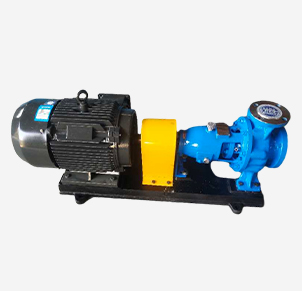Occitan
- Afrikaans
- Albanian
- Amharic
- Arabic
- Armenian
- Azerbaijani
- Basque
- Belarusian
- Bengali
- Bosnian
- Bulgarian
- Catalan
- Cebuano
- Corsican
- Croatian
- Czech
- Danish
- Dutch
- English
- Esperanto
- Estonian
- Finnish
- French
- Frisian
- Galician
- Georgian
- German
- Greek
- Gujarati
- Haitian Creole
- hausa
- hawaiian
- Hebrew
- Hindi
- Miao
- Hungarian
- Icelandic
- igbo
- Indonesian
- irish
- Italian
- Japanese
- Javanese
- Kannada
- kazakh
- Khmer
- Rwandese
- Korean
- Kurdish
- Kyrgyz
- Lao
- Latin
- Latvian
- Lithuanian
- Luxembourgish
- Macedonian
- Malgashi
- Malay
- Malayalam
- Maltese
- Maori
- Marathi
- Mongolian
- Myanmar
- Nepali
- Norwegian
- Norwegian
- Occitan
- Pashto
- Persian
- Polish
- Portuguese
- Punjabi
- Romanian
- Russian
- Samoan
- Scottish Gaelic
- Serbian
- Sesotho
- Shona
- Sindhi
- Sinhala
- Slovak
- Slovenian
- Somali
- Spanish
- Sundanese
- Swahili
- Swedish
- Tagalog
- Tajik
- Tamil
- Tatar
- Telugu
- Thai
- Turkish
- Turkmen
- Ukrainian
- Urdu
- Uighur
- Uzbek
- Vietnamese
- Welsh
- Bantu
- Yiddish
- Yoruba
- Zulu
Telephone: +86 13120555503
Email: frank@cypump.com
Dec . 27, 2024 14:08 Back to list
septic system lift pump
Understanding Septic System Lift Pumps An Essential Component for Effective Waste Management
A septic system plays a crucial role in the treatment and disposal of wastewater for homes in areas where municipal sewer services are not available. Among the various components of a septic system, the lift pump is often an unsung hero, ensuring that wastewater is effectively transported to the drain field for proper treatment and disposal. This article will delve into the importance of lift pumps within septic systems, their functionality, maintenance, and common issues homeowners might face.
What is a Septic System Lift Pump?
A septic system lift pump is a type of submersible pump specifically designed to lift wastewater from the septic tank to the drain field. It is essential when the drain field is located at a higher elevation than the septic tank. Without a lift pump, the natural flow of wastewater due to gravity might be insufficient to move the effluent, leading to potential backups and system failures.
How Does a Lift Pump Work?
When wastewater flows into the septic tank, solids settle at the bottom, while liquid effluent remains at the top. Once the water level in the tank reaches a certain threshold, the lift pump activates, drawing the liquid effluent through a discharge pipe and pushing it into the drain field. This pumping action is crucial for maintaining the flow of wastewater, ensuring that the system operates efficiently and preventing overflow or foul smells.
Types of Lift Pumps
Lift pumps come in various types to suit different needs and system designs. The two most common types include
1. Submersible Pumps These are placed directly within the septic tank and can handle both liquid and solid waste. They are designed for durability and long-term use in harsh conditions.
septic system lift pump

Both types serve the same fundamental purpose but vary in their specific applications and operational mechanisms.
Maintenance of Lift Pumps
To ensure the longevity and proper functioning of a lift pump, regular maintenance is critical. Homeowners should
- Inspect the pump periodically to check for any signs of wear or damage. - Check the electrical connections to ensure that the pump is receiving power. - Clean the inlet filter to prevent clogging due to solid waste buildup. - Monitor the system for unusual noises or vibrations, which might indicate malfunctioning components.
Additionally, having a qualified septic system professional perform an annual inspection can help identify potential problems before they escalate, saving homeowners time and money.
Common Issues with Lift Pumps
Despite their reliability, lift pumps can experience issues that may disrupt wastewater management. Some common problems include
- Power Failure If the power supply to the pump is interrupted, it can lead to backups and potential overflow in the septic tank. - Clogs and Jams Solid material can clog the pump, causing it to work inefficiently or fail altogether. Homeowners should avoid flushing non-biodegradable materials to minimize this risk. - Wear and Tear Over time, pumps may develop mechanical issues due to regular usage, necessitating repair or replacement.
Conclusion
In conclusion, a septic system lift pump is a vital component of effective wastewater management for homes reliant on septic systems. Understanding its function, maintenance requirements, and potential issues can help homeowners ensure the optimal performance of their septic system. By being proactive in maintenance and addressing problems early, homeowners can enjoy a well-functioning septic system that protects both their home and the environment. Regular inspections and responsible usage will keep your lift pump running smoothly, allowing your septic system to fulfill its essential role in waste management.
-
Reliable Non-Clog Sewage Pumps with GPT-4-Turbo Tech
NewsAug.04,2025
-
High-Performance Air Pumps for Sand & Gravel | Efficient Transport
NewsAug.03,2025
-
ISG Series Vertical Pipeline Pump - Chi Yuan Pumps Co., LTD.|Energy Efficiency, Corrosion Resistance
NewsAug.03,2025
-
ISG Series Pipeline Pump - Chi Yuan Pumps | Energy Efficiency&Compact Design
NewsAug.03,2025
-
ISG Series Vertical Pipeline Pump - Chi Yuan Pumps Co., LTD.|High Efficiency, Low Noise, Durable
NewsAug.02,2025
-
ISG Series Vertical Pipeline Pump - Chi Yuan Pumps | High Efficiency, Low Noise
NewsAug.02,2025










